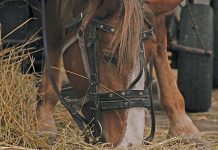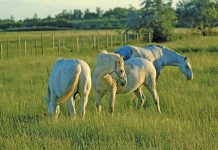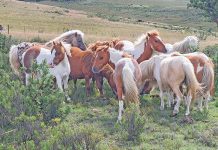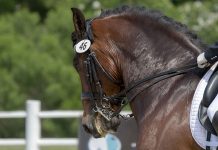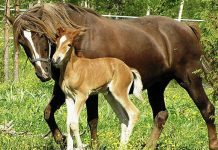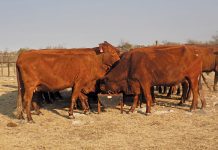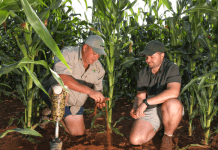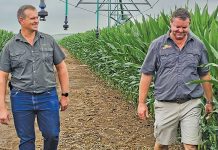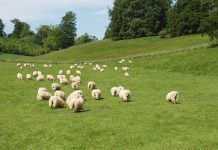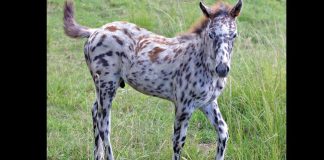For the best foals, a stallion should be matched with mares of similar size and build. McDonald objectively studied his three stallions, measured them, and entered the figures into a computer for analysis. The easiest stallion to match was Three Hawks. His only major fault was a slight heaviness in the neck. He was the strongest when it came to correcting faults in mares and fitted a greater number of females. His balance index was 95,8% and he matched mares with a balance index as high as 97%.
This means that he had a definite chance of producing offspring superior to himself. However, Three Hawks’s neck measured 29 inches (77cm) – a bit too long. To avoid out-of-balance foals, Three Hawks had to be separated from mares with the same characteristic.
Quality mares
Some stallions produce dominant female lines, while others produce strong male lines. This must be considered, so records should be examined closely. It is a mistake to concentrate on stallions, however, because that route is usually shortlived. A breeder’s real goldmine is his/her broodmares. McDonald believed there were not more quality mares in the equine industry than there were quality stallions.
“The unfortunate fact is that there is a double standard when it comes to mares and stallions,” McDonald said. “What is considered a quality mare would not be considered a quality stallion. Why is it that a breeder who gets 10 colts and 10 fillies one year will geld nine out of the 10 colts, but breed all 10 of the fillies? It does not make sense, and we certainly will not improve the quality of our horses until we improve our attitude regarding the quality of mares.”
Each of McDonald’s mares was measured, and a stallion was selected based on the resulting analysis. The objective was to produce balanced foals that were better than both the sire and the dam. Thus far, the computer had matched mares and stallions with 95% accuracy. McDonald explained that the ideal was to find a mare and stallion that shared positive similarities. This resulted in a positive, balanced profile in the foal. However, this ideal match was not always possible. The next option was to look for a mare with correctable faults.
Naturally, there were going to be dissimilarities between mares and stallions, but too many variables would lessen the probability of a well-balanced foal. A mare and stallion may be closely matched but still differ. For example, the stallion may have 30cm cannon bones while the mare’s may measure 26,25cm. It is highly probable that the combination would still produce a well-structured foal. Probability ruled that one error could be fixed, that two errors could be fixed, but that more than two began to weigh against success.
“Remember that all factors must be taken into consideration,” McDonald said. “A mare with a too-short neck may find herself with a stallion with a long neck. This is fine, but what about all the other elements? The colt may have a superior neck, but what about the other factors that may not be so obvious, such as the length of the pasterns? You may end up with a cull with a great neck! The computer analysis can eliminate this disaster.”
Positive results
When McDonald started his program he said he would not raise a colt with a balance index of less than a 93%. He had managed to raise that standard to 95%. The evidence of the computer’s influence at the McDonald ranch was becoming more obvious each spring. Square, balanced foals hit the ground, their superb infant bodies apparently in perfect proportion. A ccentuating positive results with a specially designed nutrition programme, McDonald could help those correctly engineered bodies reach 96% of their maximum growth by the age of 26 months. Contact the Saddle Horse Breeders’ Society of South Africa on (051) 448 0772 or fax (051) 448 4220.
Important measurements
For both stallions and mares, the important measurements to be taken include:
- The neck.
- Height.
- The back. Measured from between the third and fourth vertebrae and the point on the back where the hole can be felt.
- From the flank to the ground.
- From the V-muscle in chest to the ground.
- The overall length of the horse.
- From the flank to the point of the ilium.
- From the Ilium to the stifle.
- The angular measurement from the stifle to the hock.
- From the hock to the quarter of the hoof. Stallions should be measured and matched to mares of similar size and build for the best foals.

